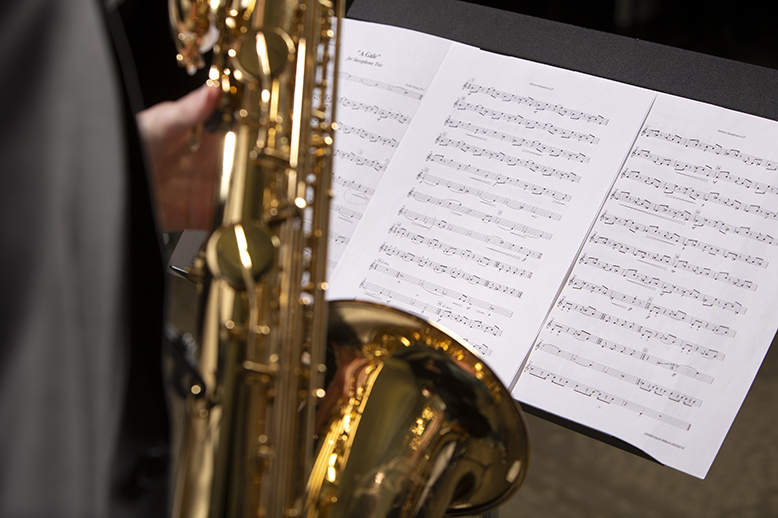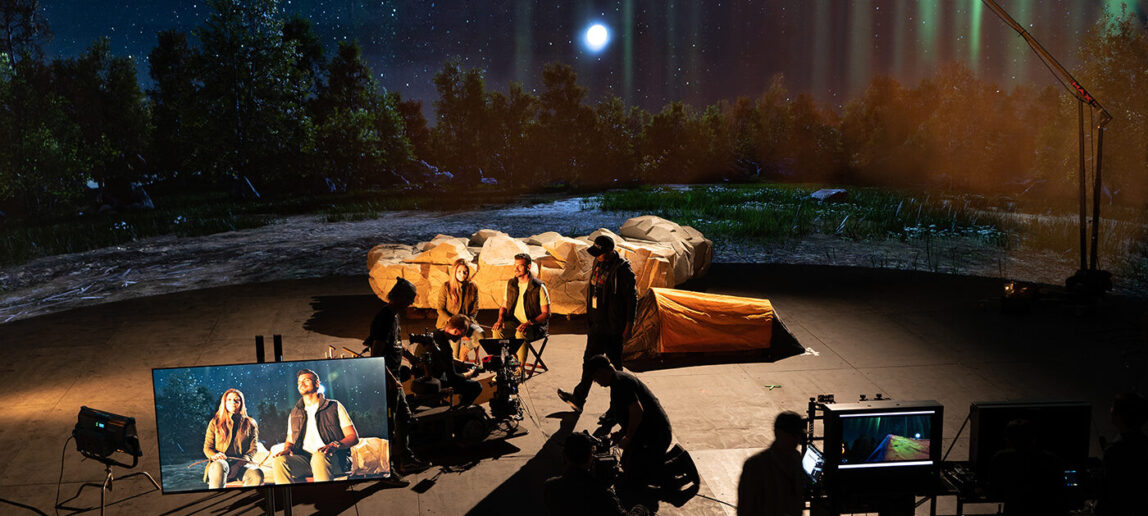New Minors In Virtual Production And Music To Debut This Fall
The Texas A&M College of Performance, Visualization and Fine Arts will add new minors in Music and Virtual Production for the fall semester.
These join the existing minors — Choreography, Dance Performance, Devised Theatre, Film and Media Studies, Game Design and Development, Graphic Design, Music Technology, Performance Studies and Studio Art — in providing a wide array of options for students.
Here’s a closer look at the two newest additions.
Virtual Production
A new minor in Virtual Production arrives on the heels of the recently announced Virtual Production Institute, the nation’s first institute of its kind that integrates real-world scenarios and the latest in extended reality technology to advance problem-solving and support workforce development across industries.
The institute is part of the College of Performance, Visualization and Fine Arts, and will be based on the Bryan-College Station campus with an extension at the new Texas A&M-Fort Worth campus. Beyond media and entertainment, the institute will explore training and development across industries, and creating digital twins of real-world objects and environments. Faculty, staff and equipment were funded as a special item by the 88th Texas Legislature at $25 million with support from the state’s growing media and entertainment industry.
Courses for the new minor will be offered at both campuses starting this fall. Virtual production prototype stages will be built in both locations, with larger stages set to be built in early 2025.
Virtual production stages incorporate an LED wall showing computer-generated imagery to create immersive environments. Augmented reality is used with the LED wall to create enhanced visual effects. The 2019 Lucasfilm streaming series “The Mandalorian” was an early game-changer in how virtual production can be utilized.
Tim McLaughlin, interim dean, said the minor is open to students across the university, aiming to provide a foundation in working with real-time, immersive physical environments. That includes building out virtual environments; working with lighting, cameras and motion capture; and using streaming data for simulation, training and in creating digital twins.
“The minor will have a breadth to it in terms of giving students this introduction to the tool set, and then how you can apply it across different areas,” he said. “And then at the end of it, to give them a chance to get specific about a particular part of that that they’re most interested in.”
The 18-hour minor includes three required courses — Foundations of Visual Computing, Virtual Production Techniques and On-Set Virtual Production. Students will select two of the following courses: Visual Computing; Pre-Visualization and Storyboarding for Virtual Production; Virtual Cinematography and Lighting; Motion-Capture Animation; and Art Direction for Virtual Production. An additional course selection will come from a variety of Visualization courses, including Interactive Virtual Environments, World-Building in Games, Applied Perception, Digital Rendering, Data Visualization, Virtual Reality and Game Level Design.
The goal is to create virtual production specialists, McLaughlin said, whether students go into visualization or into industries that are starting to incorporate virtual production, including computer science, business, engineering and agriculture.
“The virtual production minor moves the intent of the Virtual Production Institute forward,” McLaughlin said. “Growth of the state’s economy from incorporating virtual production requires a workforce. That workforce will come from visualization, but also from a range of different uses of the technology. Therefore, we need people who are deep in a major, in a discipline, who want to incorporate virtual production into what they do into that field. This really is an essential part of putting the Virtual Production Institute together and having it meet its expectations.”

Music
Andrea Imhoff says she is “over the moon” about the new Music minor offered in the College of Performance, Visualization and Fine Arts, starting in the fall.
“To be able to practice my craft and share that with students — this is candy for me,” she said. “I can’t wait.”
Imhoff is an instructional professor and collaborative pianist. She also holds the position of acting academic program director for Music, including the new minor, which brings music performance instruction together with music theory, history and musicianship, along with a wide variety of electives.
“This takes more of a traditional music training lens and allows the students the flexibility to establish their core grounding, and then explore whatever things are of most interest to them,” she said. “They will have the grounding needed to understand the language they’re going to communicate in.”
The minor is open to all students, regardless of music experience. Required courses include Music Theory I and Musicianship I, which are intended to be taken concurrently. Imhoff likens the latter as the lab class for the former.
Music Theory focuses on writing, analyzing and interpreting music, she said, along with learning technical and theoretical language. Students will apply those concepts in the musicianship course through rhythmic exercises, singing, conducting, embodiment and group performance.
“You want to learn the concept and then go use it,” Imhoff said. “It’s a lovely method of reinforcement. To get those very cerebral ideas into the body is what performance is about. That’s why they work hand-in-hand.”
Two performance classes are required for the minor, providing solo and group or ensemble instruction. This gives students opportunities to work with their instrument of choice and also to apply it in a group setting, Imhoff said.
Individual instruction will come from instructors including Dr. Virginia Figueiredo, instructional associate professor in woodwinds, and Dr. Francisco Perez, instructional associate professor in percussion, Imhoff said. Group instruction comes in classes including MUSC 381, which features multiple sections: Steel Pan, taught by Dr. Kim Kattari, associate professor and program director for Performance Studies; Small Ensembles, taught by Dr. David Wilborn, associate professor of music; Experimental Music Ensemble, taught by Dr. Will Connor, lecturer; Chamber Music, taught by Figueiredo; and Percussion Ensemble, taught by Perez.
The ability for students to collaborate musically is essential to the minor, Imhoff said.
“As musicians, we never create music in a vacuum,” she said. “We have to be able to collaborate with a wide variety of people, whether they play our instrument or not. When we come together, we need to be able to communicate with the people we’re working with and let them know what our interpretation is to figure out where we’re going to give and take.”
Imhoff noted that the Steel Pan course and its connected Maroon Steel performance group is an ideal example of how students can work together. Even if they’ve never played steel pan before, the students are soon a part of Maroon Steel’s popular performances on campus and at First Friday in Downtown Bryan.
“It’s a really great entry point,” she said. “People learn so fast. They come in and learn by doing. And when they incorporate that with theory and musicianship, they come up to speed very quickly.”
The remaining hours in the minor come from an array of electives. Students can choose from performance history courses (including History of Rock, History of Jazz, History of Country and Western); music technology (including Sonic Improvisation, Recording and the Producer and Electronic Composition); special topics (including Guitar Heroes, Music and Film, Music and Dance, Music and Video Games); and global music courses (including Global Hip-Hop, Japanese Traditional Performing Arts and Popular Musics in the African Diaspora).
Imhoff said she has fielded questions about a music-focused minor for years, and that there has long been a desire for it among students. She eagerly anticipates the spirit of collaboration and creation that will follow.
“No matter what instrument people play, when musicians come together and they start trying things out for each other, experimenting in front of each other and seeing what works and what doesn’t, that’s when the air begins to crackle,” she said. “Someone always has a different point of view, whether it be from a different instrument, from technology or research. Whatever it may be, that feedback adds layers of information, which leads to depth of interpretation. That’s when exciting individual expression starts to happen. And that’s what we’re looking for — a place for people to express themselves with their instruments.”
Top photo of a virtual production stage courtesy of Sony.

